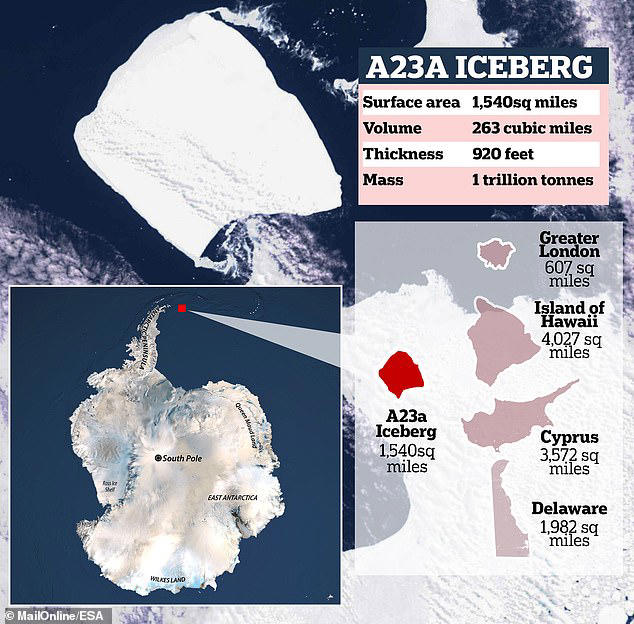PRELIMS BITS

- Overview:
A23a, the largest iceberg on record, recently detached from Antarctica’s Filchner Ice Shelf and is heading towards South Georgia Island. Weighing about one trillion tons and spanning 400 square miles, its movement raises concerns about ecological impacts. - Background:
- A23a remained stationary on the ocean floor for 37 years before being released in 1986.
- Changes in ocean currents have moved it 300 km towards South Georgia Island.
- Experts estimate it could collide with the island within two to four weeks.
- Ecological Concerns:
- If A23a grounds, it may block feeding areas crucial for wildlife, particularly penguins.
- Penguins depend on accessible feeding grounds to nurture their young, and a grounded iceberg could lead to food shortages.
- Impact on Human Activities:
- Shipping companies can navigate around A23a due to its size and location.
- Smaller icebergs, however, pose a greater challenge for navigation.
- Large icebergs have previously disrupted fishing operations, making certain areas temporarily off-limits.
- Climate Change and Iceberg Dynamics:
- The movement of A23a reflects broader climate change trends.
- Increasing frequency of such events is linked to human-induced climate shifts, raising concerns about the future of polar ecosystems and sea levels.
- Future Projections:
- A23a’s exact path is uncertain.
- It may follow currents around the island or ground in shallow waters, but historical precedents provide some guidance.




